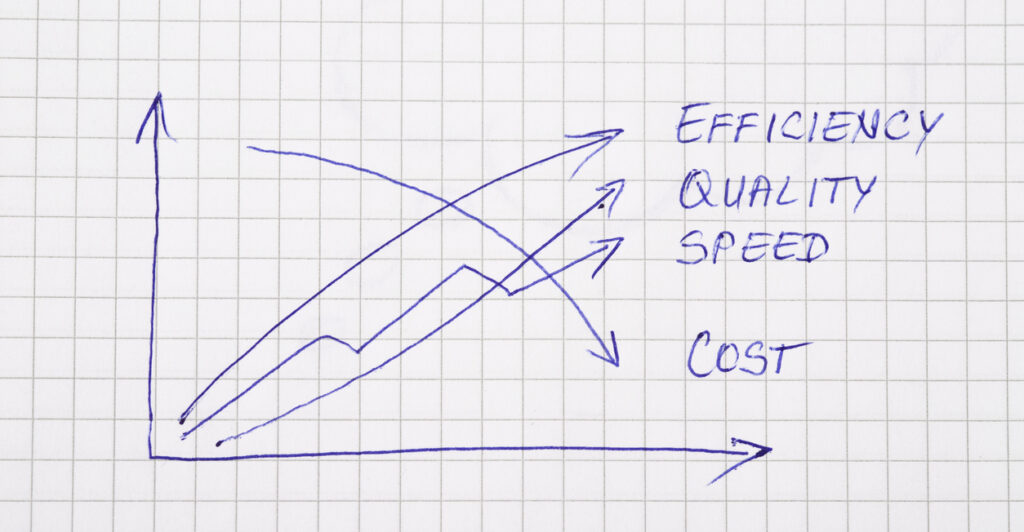
How to Reduce Your Law Firm’s Operating Expenses: Slashing time to complete processes
Law firm operating expenses are a reality for every legal practitioner. But not all law firm overhead expenses are created equal. Some are critical pieces of your revenue-generating process. Others are extraneous and unnecessary. As a firm leader, it’s your job to sort out what’s crucial and what’s unneeded.
Traditional operating expense mitigation strategies
There are countless methods of reducing law firm operating expenses. They range from the hiring of process and efficiency consultants to attempting to eliminate unnecessary or redundant positions in your firm. Two strategies, in particular, are worth noting.
Downsizing/rightsizing
Traditionally, law firms have relied heavily on cutting staff to save money on overhead expenses. For example, a leading law firm consultant suggests, “Where possible, firms that still have a two-to-one attorney-to-secretary sharing ratio should consider going to a three-to-one sharing ratio.”
There are three key problems associated with this approach. First, productive staff members are frequently caught up with truly redundant ones in the drive to save on salary costs. Second, a firm can’t simply lose an employee and expect to continue doing business as usual. Instead, the work that used to be done by a non-lawyer staff member often winds up being done by a lawyer – at a significantly higher cost.
Finally, trying to do “more with less” often results in a firm’s people becoming overstretched and overworked. This, in turn, leads to burnout, increased turnover, and a lower quality of work product.
New technology solutions
Many firms find the answer to inefficient workflows and excessive overhead in new legal technological solutions. Adding new technology to existing processes has the potential to be more effective than simply downsizing your workforce. This is because good technology tends to unlock the productive potential of each of your lawyers and non-lawyer staff members. In this way, you’re adding to the productive capacity of your firm, rather than subtracting from it.
However, while new applications and practice management platforms can be fantastic additions to law firms of all sizes, it’s critical that firm leaders take a human-centered approach to implementation.
New operations solutions for law firms
New technologies for law firms run the gamut — from applications that handle individual tasks, like speech-to-text transcript creation, to full-service legal practice management software suites like AbacusLaw or Zola.
Good technology amplifies and accelerates the efforts of your human capital and improves law firm profitability. Bad technology adoption slows down processes with unneeded and unnecessary layers of complexity. So how do you ensure that your firm’s purchase of the latest piece of tech helps, rather than hinders?
Training and support
The adoption of any technology in your firm, from landlines to cloud-based practice management software suites, requires adequate training. Your people should be well-versed in how to handle the tools you give them. If they’re not, they simply won’t use them. Instead, you’ll end up with a situation in which your lawyers and non-lawyer staff are working around your technology, rather than working with it.
Similarly, your people need a person to go to with their technology problems as they arise. Ideally, that person is in-house and regularly accessible. This person doesn’t need to be a dedicated IT employee. They just need to be enthusiastic and knowledgeable about the software and technology tools you use in your firm and willing to educate others on how to use them.
Buy-in
Offering adequate training and support will encourage buy-in, but they’re not enough on their own. To secure the enthusiastic commitment of your people you’ll need to actively demonstrate how the new tools make their daily lives easier. You’ll have to show them why your shiny new tech is worth taking valuable time out of their day to learn and acclimate to.
One of the easiest ways to do this is to involve key personnel in technology purchasing decisions. Gathering the input of your paralegals, legal assistants, and lawyers when you’re choosing a new tech tool is invaluable in its own right, as you’ll get critical insights into the suitability of the technology, but you’ll also make them feel invested in your new processes.
Maintain your focus across three areas
In sum, law firm operating expenses will always remain a salient issue. Firm leaders must remember to maintain their focus on three critical issues to optimize their firms:
- Distinguishing between productive overhead and truly redundant costs
- Relying on technology to increase the productivity and efficiency of their workforce
- Maintaining a human-centered approach to the implementation of new technological solutions
A focus on these three things will ensure that your firm remains lean, productive, and actually uses the tools you make available to it.